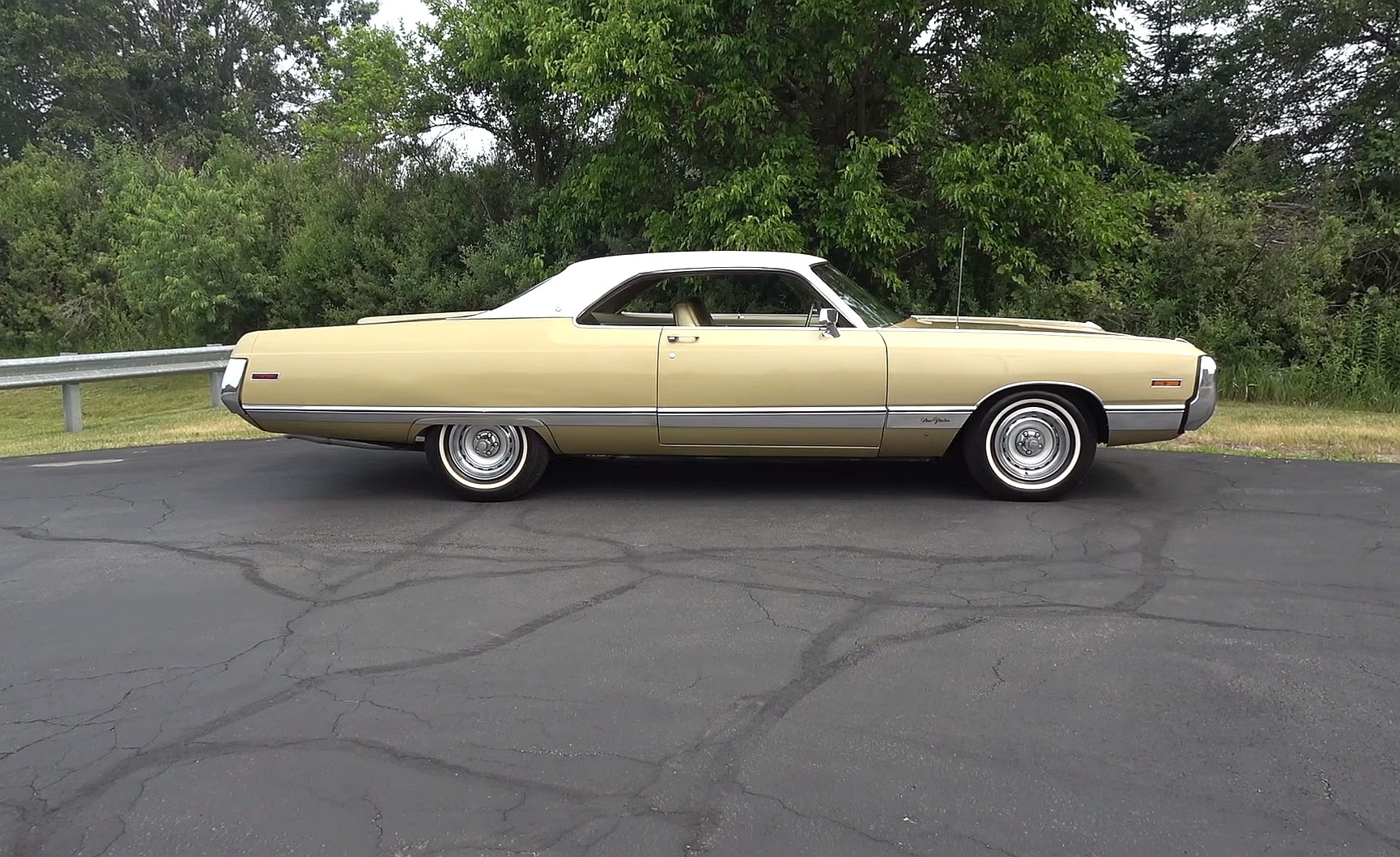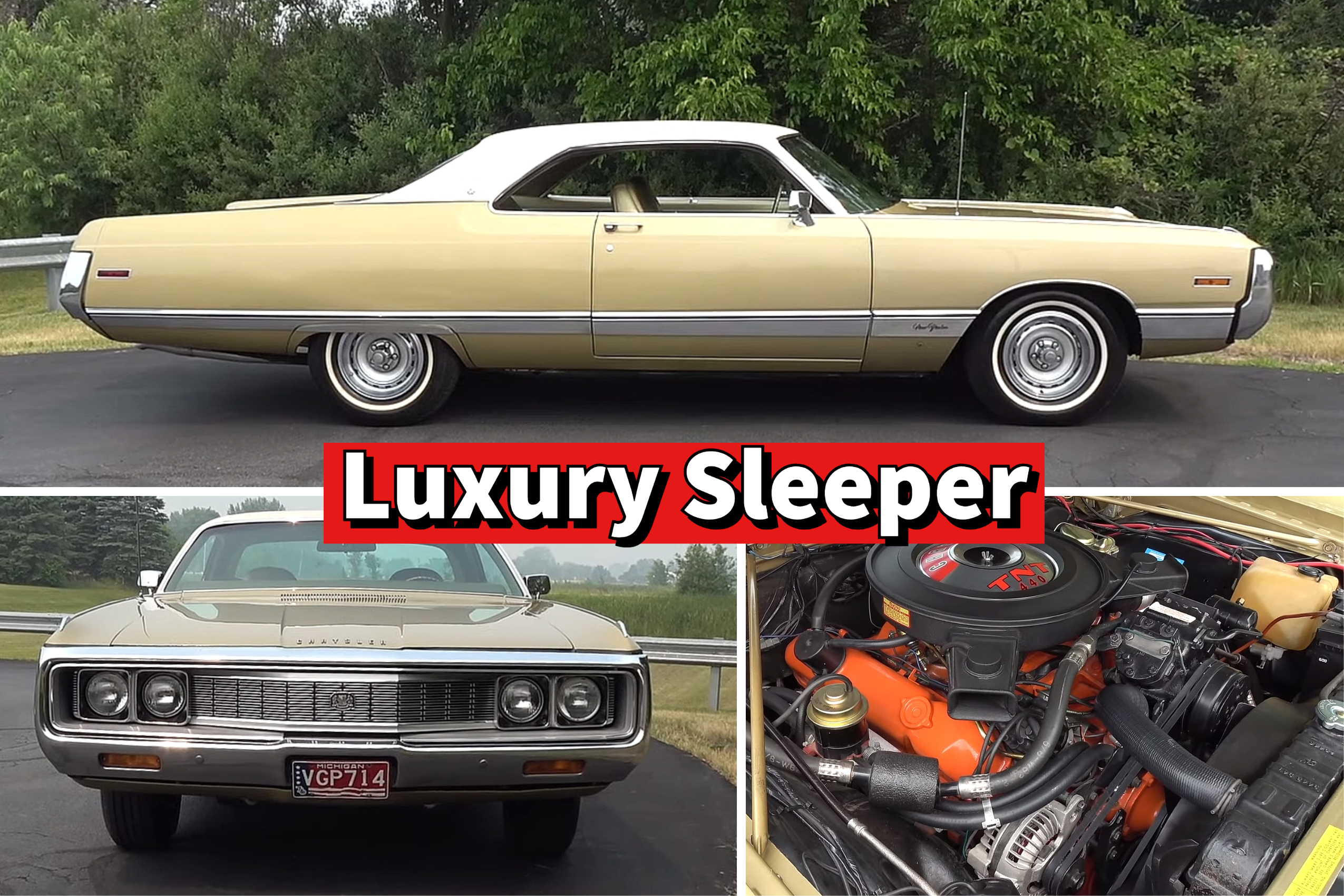One of the most iconic Chryslers ever made, the New Yorker was born in the 1940s and soldiered on for over 50 years. A full-size rig for most of its time in showrooms (the 1983-to-1988 version was a midsize), the nameplate is usually associated with luxury.
Originally an art deco-styled vehicle, the New Yorker shared design cues with the 300 “letter series” in the 1950s. Yes, it also got Virgil Exner’s “Forward Look” design language that cost Chrysler a whopping $300 million at the time (about $3 billion in 2023 dollars). And up until the early 1970s, it was powered exclusively by big-block V8 engines.
Was the New Yorker part of the muscle car wars? Not really. Despite being offered with the massive 440-cubic-inch (7.2-liter) V8, the New Yorker never went into 400-horsepower territory like most Dodges and Plymouths did in the late 1960s and early 1970s. However, some got close thanks to the optional “TNT” mill. First introduced in 1966, the beefed-up 440 came with 365 horsepower on tap, 15 more than the regular RB-block engine.
The “TNT” remained in production until the end of 1971, when the Chrysler Corporation phased out all high-performance engines, including the six-barrel 440 (390 horsepower) and the 426-cubic-inch (7.0-liter) HEMI V8 (425 horses). At the time of its discontinuation, the 440 “TNT” was rated at 370 horsepower. And while it’s nowhere near as powerful and celebrated as the HEMI and the 440 “Six-Pack,” it’s quite the rare powerplant in a Chrysler. Especially in cars produced in 1971 when high insurance rates kept many people away from high-performance options.
How rare? Well, there’s no official production breakdown based on drivetrain combos, but experts agree that only a tiny fraction of 1971 New Yorkers left the assembly line with the special-order V8. And that’s because most high-performance Chrysler enthusiasts were going for the 300 “non-letter series” model, which still benefitted from the legacy of the 1950s 300 “letter series,” one of America’s first muscle cars. The New Yorker was viewed as a luxury cruiser, and many customers weren’t even aware of the availability of the “TNT” option.

The two-door hardtop you see here is one of the few New Yorkers specified with the U-Code powerplant in 1971, right before the mill went the way of the dodo bird. Again, there’s no info on how many were made, but we know that only 4,485 of the 34,968 New Yorkers sold that year were two-door coupes. And word has it fewer than 5% were ordered with the “TNT,” which narrows it down to fewer than 250 units. But regardless of how many left the assembly line, you’d have to be very lucky to see one at classic car shows. That’s because fully restored examples like this Crystal Dawn Metallic rig are rarer than hen’s teeth.
A one-family car until 2014, this New Yorker was restored by the second owner to its original specifications. And I think it’s the very definition of a frame-off restoration. This massive hardtop looks perfect inside and out, and the engine bay is so clean it could win awards on its own. And, of course, it runs and drives like it just left the Chrysler factory.
But what I love even more about this New Yorker is that it’s an unassuming sleeper. While it looks like a fancy coupe that you could drive comfortably from Rhode Island to California, it could also raise a few eyebrows at the drag strip. Sure, it won’t win against a HEMI-powered Dodge Charger or Plymouth Road Runner, but it could cover the quarter-mile in about 15 seconds. And that’s nothing to sneeze at for a land yacht tipping the scales at more than 4,500 pounds (2,041 kg).
But you don’t have to take my word for it. The video below includes some pedal-to-the-metal footage. Accompanied by a muscle car-like exhaust note. Crank up the volume, hit play, and enjoy.
